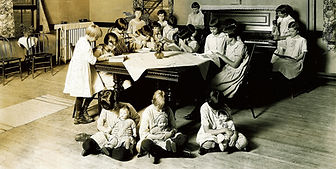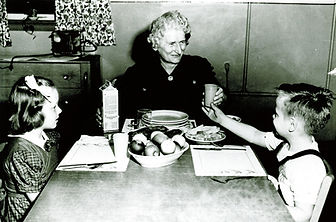History: Tracing Our Roots








Before you decide that there's not much you can do about the world's problems, that your vote does not count, listen to the story of Gottlieb Germann and his wife, Annie.
Gottlieb was a harness maker in the cavalry department at the Rock Island Arsenal, making two dollars a day. In February of 1898, he discovered a baby boy abandoned in a barn. He and his wife began a personal campaign to open a home for similarly abandoned children. He submitted a proposal to the Associated Charities of Rock Island. No response. In May, he made an appeal to the Tri-City Ministerial Association to establish a rescue mission, but without results.
In desperation, Gottlieb and Annie rented a house at 14th Street and Fourth Avenue and opened a kindergarten, trusting that the Lord would supplement their own meager resources. A young school teacher from Davenport showed up to teach the kindergarten. She agreed to furnish the equipment for the school and work without any definite pay.
The Germanns barely made a dent in the poverty and homelessness all around them, but they persisted. Finally, in 1899, with help from a local lawyer and his wife, the Germanns incorporated the Union Mission in a larger home several blocks away.
The Union Mission had officers and a board of directors, but no money for a superintendent. The Germanns agreed to leave their own home, move into the mission, and serve as superintendents without pay for three years. And, in addition, they donate to the mission's general fund, $30 a month from Gottlieb's earnings at the Arsenal.
The Union Mission opened on December 12, 1899. Within a month, it had taken in ten children. Another 48 arrived within the next year.
Eventually, the mission idea caught the fancy of others. Community and church support increased. Many private clubs and community groups contributed money and volunteers. Leading citizens agreed to serve on the board. The county came across with funds.
Without a harness maker's willingness to see a problem through to its solution, there would today be no Union Mission in Rock Island - or rather, no Bethany Home, the new name it adopted in 1902.
"Rock Island Lines"
Roald Tweet, Ph.D.
Former Professor of English, Augustana College



